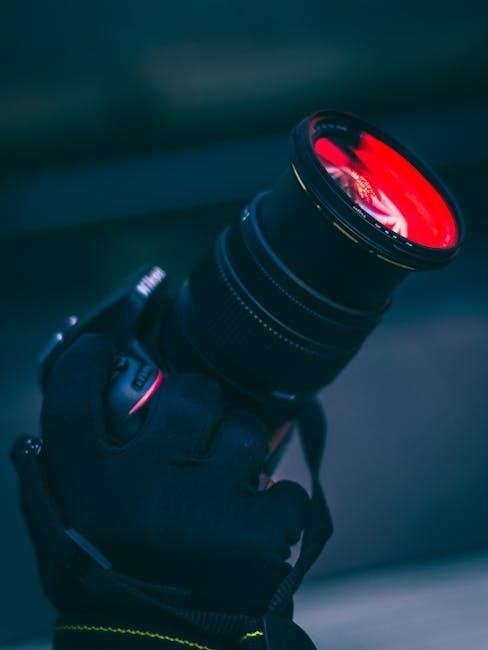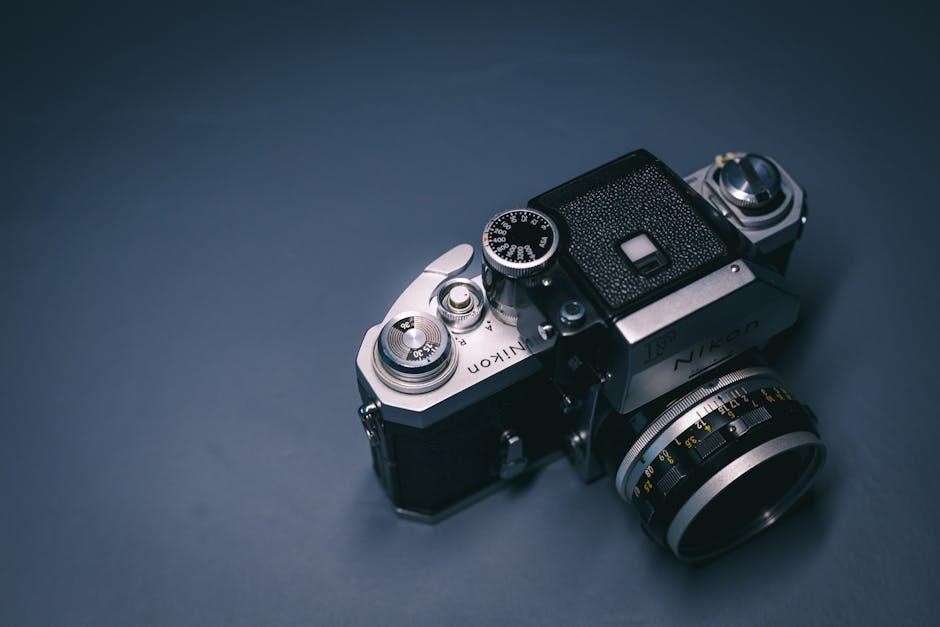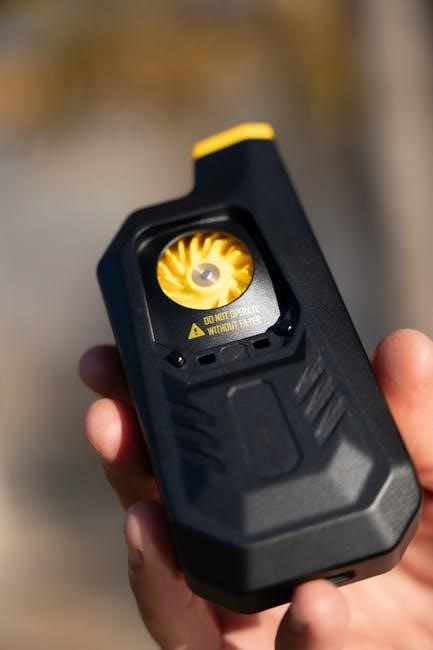The Nikon F3 user manual provides guidance on operating the camera, with information on features and functions, available for download in PDF format from various online sources, including the official Nikon website, with detailed instructions.
Users can access the manual to learn about the camera’s settings, modes, and accessories, helping them to get the most out of their Nikon F3, a professional-grade 35mm film SLR camera, introduced in 1980, with a long production history.
Overview of the Camera
The Nikon F3 is a professional-grade 35mm film SLR camera that was introduced in 1980 and remained in production until 2001. The camera features a rugged and durable design, making it a popular choice among photographers. The Nikon F3 has a number of innovative features, including a high eyepoint viewfinder and a versatile shutter speed control system. The camera’s design and construction make it well-suited for a wide range of photography applications, from portrait and landscape photography to photojournalism and fine art photography. The Nikon F3’s popularity has endured long after its production ceased, and it remains a highly sought-after camera among collectors and photographers today. The camera’s manual provides detailed information on its features and functions, helping users to get the most out of their Nikon F3. With its rich history and loyal following, the Nikon F3 is a true classic in the world of photography. The camera’s legacy continues to inspire new generations of photographers and camera enthusiasts.

Nikon F3 Specifications
Body and Design
The camera’s body is made of durable materials, with a rugged design that withstands heavy use, featuring a compact and ergonomic shape that fits comfortably in the hand, allowing for easy handling and operation.
The Nikon F3’s design includes a range of features, such as a large viewfinder and a convenient control layout, making it easy to access and adjust camera settings, with a focus on intuitive operation and minimal clutter.
The camera’s body also incorporates a range of innovative design elements, including a unique shutter release mechanism and a precision-crafted lens mount, ensuring a secure and stable connection between the camera and lens.
Overall, the Nikon F3’s body and design reflect a careful balance of form and function, with a focus on creating a camera that is both durable and easy to use, making it an ideal choice for professional photographers and enthusiasts alike, with its timeless design and exceptional build quality.
The camera’s design has been refined over the years, with a range of subtle improvements and enhancements, resulting in a camera that is both familiar and innovative, with a unique character that sets it apart from other cameras.
The Nikon F3’s body and design are a key part of its enduring appeal, with a focus on creating a camera that is both functional and beautiful, with a range of design elements that reflect a deep understanding of the needs and preferences of photographers.

Shutter Speed Control
The camera features automatic and manual shutter speed control, with a range of speeds from 1/2000 to 8 seconds, including X, B, and T modes, for creative flexibility and precision.
Manual Control
The Nikon F3 camera offers manual control of shutter speeds, allowing users to select from a range of speeds to achieve the desired effect. This feature is particularly useful for photographers who want to have more creative control over their shots. The manual control mode is accessed by rotating the shutter speed dial, which can be set to various speeds including 1/2000, 1/1000, 1/500, and more. Additionally, the camera features X, B, and T modes, which provide further flexibility and precision. The X mode is used for electronic flash synchronization, while the B mode is used for bulb exposures. The T mode is used for time exposures, allowing the user to control the length of the exposure. With manual control, photographers can experiment with different techniques and achieve unique results. The camera’s manual control feature is an important aspect of its functionality, making it a popular choice among professional photographers. The manual control mode is easy to use and provides a high level of precision.

Flash Compatibility
The Nikon F3 is compatible with various flash units, including Speedlights, for enhanced photography capabilities and better image quality, using a separate sync terminal for connection, with specific models supported.
Speedlight Compatibility
The Nikon F3 camera supports various Speedlight models, including the SB-19, SB-18, and SB-16B, which can be used to enhance photography capabilities and improve image quality.
However, some Speedlight models may not be compatible with the F3 camera when used with certain finders, such as those other than the standard DE-3 or Eye-Level Finder DE-2.
It is essential to check the compatibility of the Speedlight model with the F3 camera and the finder being used to ensure proper functioning and to avoid any potential issues.
The Speedlight compatibility information can be found in the Nikon F3 user manual, which provides detailed guidance on the use of Speedlights with the camera.
Additionally, the manual provides information on the settings and modes that can be used with the Speedlights, allowing users to get the most out of their Nikon F3 camera and Speedlight combination.
By using compatible Speedlights with the F3 camera, users can achieve better image quality and enhance their photography experience.
Sync Terminal
A separate sync terminal with a protective screw-in-cover is provided on the camera for flash synchronization, allowing users to connect external flash units, with a cover for protection when not in use always.
Protective Screw-in-Cover
The protective screw-in-cover is a crucial component of the Nikon F3’s sync terminal, designed to safeguard the terminal when not in use. This cover prevents dust, moisture, and other foreign particles from entering the terminal, which could potentially damage the camera’s electrical components. The screw-in-cover is made of a durable material and is designed to be easily removable, allowing users to access the sync terminal when needed. By protecting the sync terminal, the screw-in-cover helps to ensure the longevity and reliability of the camera, making it an essential feature for photographers who frequently use external flash units. The cover is also designed to be secure, preventing accidental removal or loss, and is a testament to the attention to detail and commitment to quality that Nikon is known for. Overall, the protective screw-in-cover is a simple yet effective feature that helps to make the Nikon F3 a more versatile and dependable camera.

Downloadable User Manuals
Official Nikon websites offer downloadable user manuals in PDF format for easy access and reference purposes always available online.
PDF Format
The Nikon F3 user manual is available for download in PDF format, which can be easily accessed and viewed on various devices, including computers, tablets, and smartphones, making it convenient for users to refer to the manual whenever needed.
The PDF format allows for easy navigation and searching of specific topics, with hyperlinks and bookmarks that enable quick access to different sections of the manual, saving time and effort for users who need to find specific information.
Additionally, the PDF format preserves the layout and formatting of the original manual, ensuring that the content is presented in a clear and readable manner, with images and diagrams that help to illustrate complex concepts and procedures, making it easier for users to understand and follow the instructions.
Overall, the PDF format is a convenient and user-friendly way to access and use the Nikon F3 user manual, providing a valuable resource for users who want to get the most out of their camera and improve their photography skills.
